
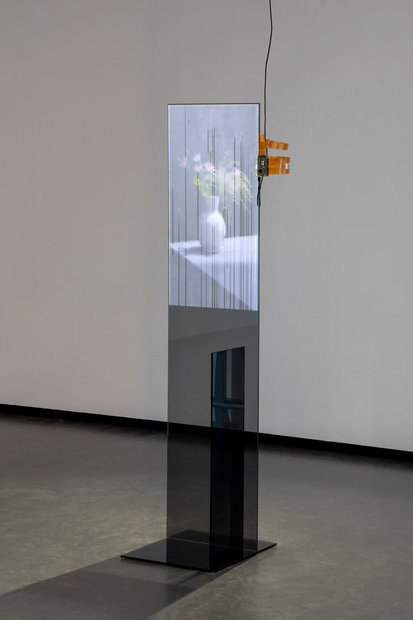
Because it detaches the object from its spatial and temporal bond, the digital screen is the modern presentation medium par excellence. It almost seems as if the glass of the screen encloses the vase within itself. Instead of its surface, we touch glass. The effect of a window pane fogged by water vapor alludes to the transparency of the barrier: only when sunlight is reflected in it or water vapor condenses on it does its transparency become transparent and recognized as a barrier. If one strokes the glass of the touchscreen with one's finger, the virtual haze is wiped aside and reveals the image of the vase behind it. (© Anne-Sophie Oberkrome)

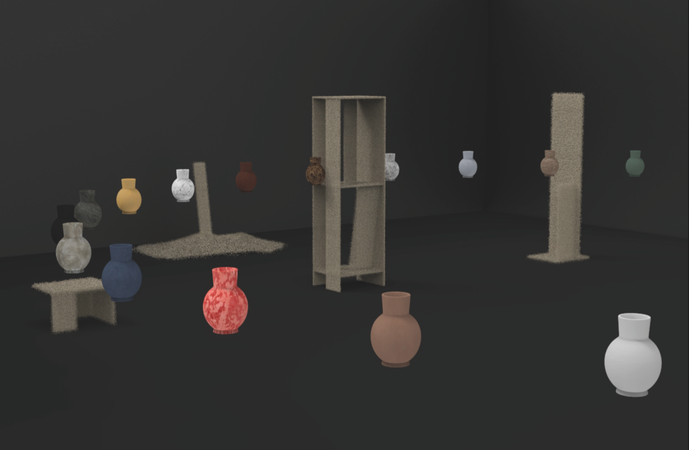
© Anne-Sophie Oberkrome

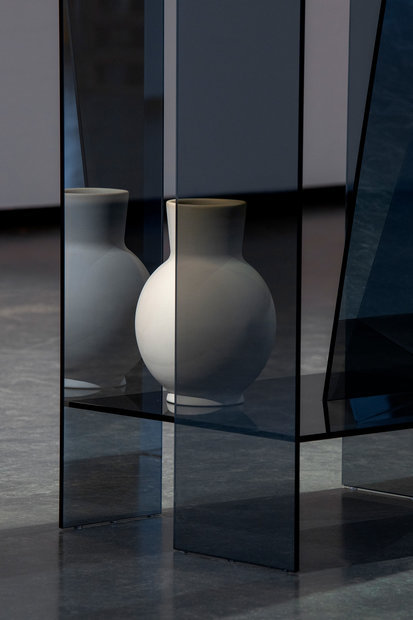
The showcase is emblematic of the presentation of the analog object in analog space: panes of glass that overlap and collide, forming a three-dimensional space within space - a stage through which the vase(c) is supported and protected. The dark tinted and one-sided mirrored panes, bring out the properties of glass. It is a play with transparency and reflection that influences the viewing moment. The shifting and twisting of individual panes of glass creates illusionistic moments and unexpected angles that can be discovered by walking around the showcase. (© Anne-Sophie Oberkrome)

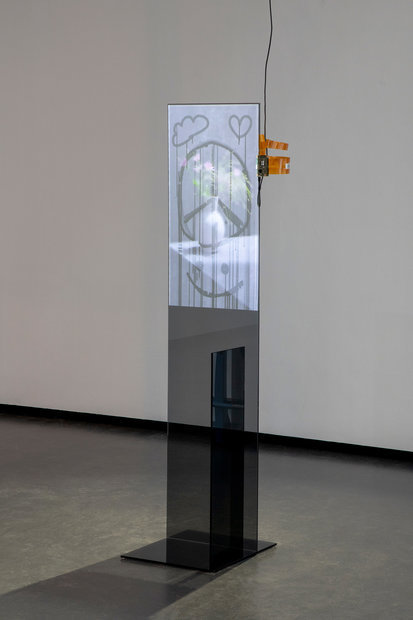
© Anne-Sophie Oberkrome

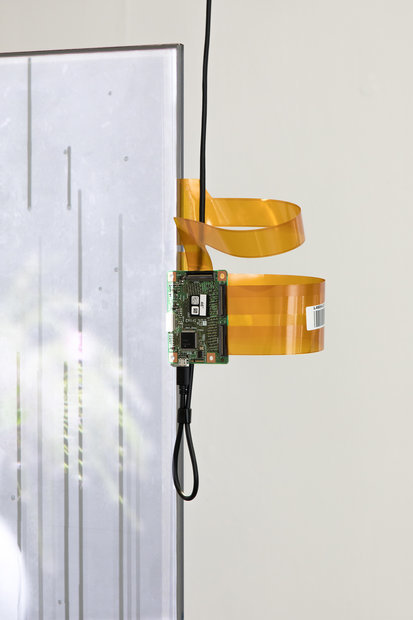
Virtual reality allows us to enter digital space. We get an additional perspective on the scenery surrounding us, another layer superimposed on everything. Physical laws are suspended, giving us the opportunity to completely redefine staging and presentation. The glass barrier begins to dissolve into its components - into sand, the grain, into pixels. The vase shows a spatial and temporal dissolution that was not so visible in the analog. It finds itself in a variance of form and texture. (© Anne-Sophie Oberkrome)

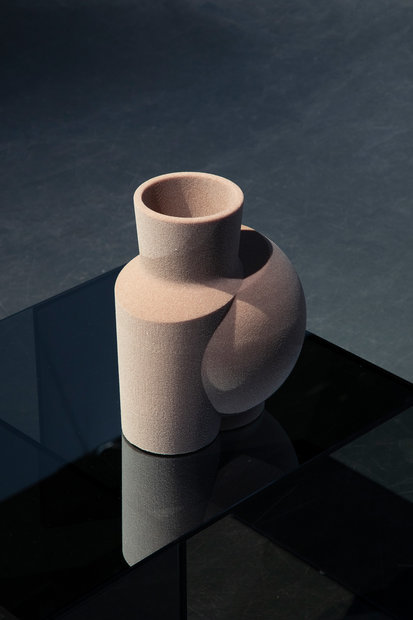
The vase is digitally dissected into all its layers and components. Materiality, just like size and shape, are now variable. It does not have to fulfill any function. By transferring it back to the analog, new functions are assigned to the individual levels: The texture becomes the material of which the vase is made. The result is an analog-digital sculpture, a collage of body and surface - a hybrid of image and object. The collage opens up an in-between space(f) in which the vase presents itself in its transformed exterior; only the reflection allows it to appear in its original form. Qualities from both worlds are thus interwoven. The sculpture finds its place on a pedestal made of glass, by which it is supported but no longer concealed. (© Anne-Sophie Oberkrome)
The installation "Layered Transparency | Displayed Opacity" explores a changing perception due to an increasing penetration of analogous, haptic phenomena with virtual and digital offerings in design, presentation and interaction with the objects.
In a total of 4 stations, glass and its source material sand explore the relationship between the real and the virtual world.
- The analogue object in analogue space
- The analogue object in digital space
- The digital object in digital space
- The digital object in analogue space
During this process, the initially analogue object goes through various stages of metamorphosis and thus documents the potential influence of the respective form of presentation on itself, the object: from analogue to analogue, to digital to digital, to digital to analogue.
The object shown in each station is a vase. It can tell the stories between analogue and digital. As a thing from everyday life, its function stands between decoration and purpose. Painted vases serve as three-dimensional images for the preservation of the past. Textures, inscriptions and drawings painted on the surface tell of the story in which the object was once embedded.
The material glass forms a bridge and acts as the ultimate boundary between the real and the virtual world, between us and the object. Therefore it is used as material in every form of presentation for staging. A layer that lies before things.